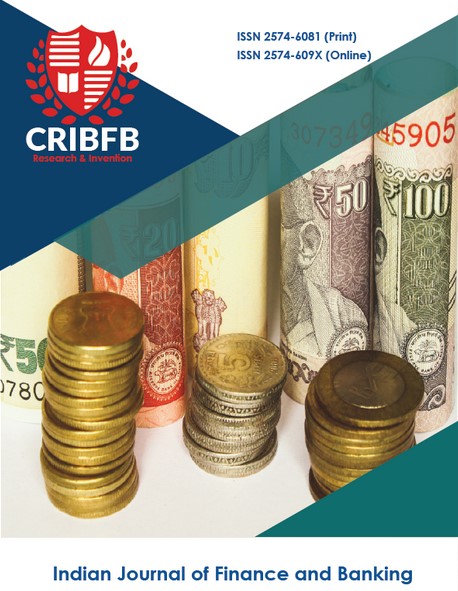EUROPEAN UNION AND THE UNITED STATES OF AMERICA: AN ECONOMETRIC INVESTIGATION ON THE PARADIGM SHIFT IN THE GDP’S GROWTH RATE TREND
Main Article Content
Abstract
The recent war between Ukraine and Russia is yet another instance that emphasizes that economic overdependence may destroy the economic fabric of a nation. Taking this premise into consideration, this study aims to examine the long-term and short-term connection between the European Union and the United States GDP growth rates using tools like linear regression, Granger causality test, and impulse response function. Quarterly GDP figures of the European Union and the United States were taken for the period spanning 22 years, starting from quarter 2 of the financial year 1998-1999 to quarter 4 of the financial year 2018-2019. The Regression model and the Granger Causality test prove that the United States’ GDP growth rate is influenced by that of the European Union in the short-run as well as in the long-run, but the EU’s GDP is independent and does not follow the former. The possible explanation can be the trade surplus of the European Union over the United States in the recent past. Hence, the authors are of the opinion that a much more balanced trade between these two powerful economies would ensure the stabilization of the global trade and stability of the global power equation.
JEL Classification Codes: F40, F43, F44.
Downloads
Article Details
Section
How to Cite
References
BEA. (2021). Annual 2020 Press Highlights (Issue December 2020). Retrieved from https://www.census.gov/foreign-trade/statistics/highlights/index.html
Bywalec, G. (2020). Dynamics and determinants of trade exchange between the European Union and India. Optimum. Economic Studies, 3(101). https://doi.org/10.15290/oes.2020.03.101.10
Cabedo, J. V. C. (2017). T.T.I.P.: USA vs EU... The dark side of trade? Chimica Oggi/Chemistry Today, 35(2), 25-27.
China: The rise of a trade titan | UNCTAD. (n.d.). Retrieved from https://unctad.org/news/china-rise-trade-titan
Comission, E. (2008). The European Unition and the United States. Global partners, global responsibilities. Retrieved from http://www.eurunion.org/2022
Golinelli, R., & Parigi, G. (2014). Tracking world trade and GDP in real time. International Journal of Forecasting, 30(4) 847-862. https://doi.org/10.1016/j.ijforecast.2014.01.008
Hussain, M. E., & Haque, M. (2016). Foreign direct investment, trade, and economic growth: An empirical analysis of bangladesh. Economies, 4(2). https://doi.org/10.3390/economies4020007
Konovalova, Y. A., & Ushanov, S. A. (2019). EU in the system of trade interests of USA. RUDN Journal of Economics, 27(2)386-400. https://doi.org/10.22363/2313-2329-2019-27-2-386-400
World Bank (WB). (2022). World Bank national accounts data, and OECD National Accounts data files. Retrieved January from https://data.worldbank.org/indicator/NY.GDP.MKTP.CD?locations=US




